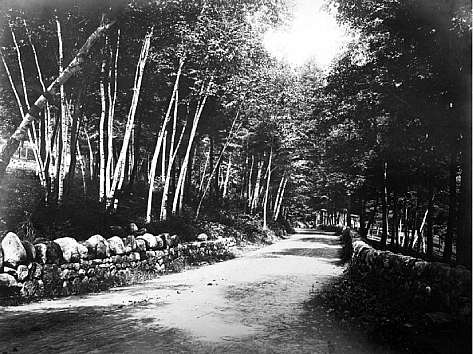

Benjamin Van Buren's Bay
Charles G. Gosselink
Contents Previous Next
 |
 Benjamin Van Buren's Bay Charles G. Gosselink Contents Previous Next |
I often find myself imagining what Benjamin and Jane Van Buren and their two little girls saw when they first arrived here in 1847. Trees covered the hillside from the cliffs above down to the lake. There were outcroppings of rock along the shore and one sandy beach. Perhaps there were blueberries out on the point. There were certainly plenty of fish in the clear waters of the bay. To see what it was like, we have to cross the lake to the eastern shore and Lamb Shanty Bay. It must have been lovely. But what brought the Van Buren family here? What attracted them to this place? They were not looking for vacation property. They were looking to make a living, and this area must not have been very promising. Even when they had cleared some land, it would have been only marginally adequate for farming. Perhaps there was money to be made from lumber or firewood. Hunting and fishing would have provided some food. It would have been a hard life.
But perhaps it was the unpromising nature of the land and its remote location that was the attraction. No one, they might have thought, would be likely to covet their homestead or bother them. The area was sparsely populated. Hague was the closest established settlement and there were probably some farms on the Split Rock and Battle Hill roads. There may have been houses at Sabbath Day Point and there was a small but thriving community on the other side of Tongue Mountain at Wardsboro, on the old road to Hague. But there were few people in the immediate area. Jabez Patchin may have lived in the vicinity earlier and then moved to his cabin on the lake, but his son Henry Patchin acquired the Silver Bay property, directly from Edward Ellis, only in 1859. As we have noted, the Braisteds, did not arrive until 1865. Our bay may have provided sanctuary for Benjamin and Jane Van Buren at a time when life for an African-American family, even in New York State, would have been difficult at best. It provided them beauty, as well.
And why did John Braisted bring his family here? We do not know, but perhaps he too was looking for sanctuary, a place as far away as possible from the horrors of the war he had just experienced. He would find it in this bay, though his closest neighbor would have been there as a reminder of the cause for which he had fought.
The Van Burens were gone by the time J.J. Wilson established his hotel at Silver Bay in 1885. Within twenty years, with the arrival of Silas Paine, the founding of the Silver Bay Association, and the settling of the Saints, the physical and human landscape of our bay had changed completely. Within fifty years, the property lines had been drawn, most of the vacation homes that we recognize even now had been built, and many of the trees had been cut down. New roads were constructed, a highway put through, telephone lines strung. We are not sparsely populated now and our bay is no longer remote.
But Benjamin Van Buren's Bay remains for us a sanctuary, not in the real sense it must have had for them, but in an important way. It is a place where we can come to escape for a time from the world out there, to enjoy the beauty here, and to recharge our spirits. We are grateful for this place and we are enriched by the memory of Benjamin and Jane Van Buren, of Julia, and Hiland, and their brothers and sisters, of John and Olive Braisted and their children, of the saints who followed, and all those pioneers who came here first.
 Percy Penfield | |
| Vicars Trip 1919 |
 John Shattuck | |
| Silver Bay Road 1910 |